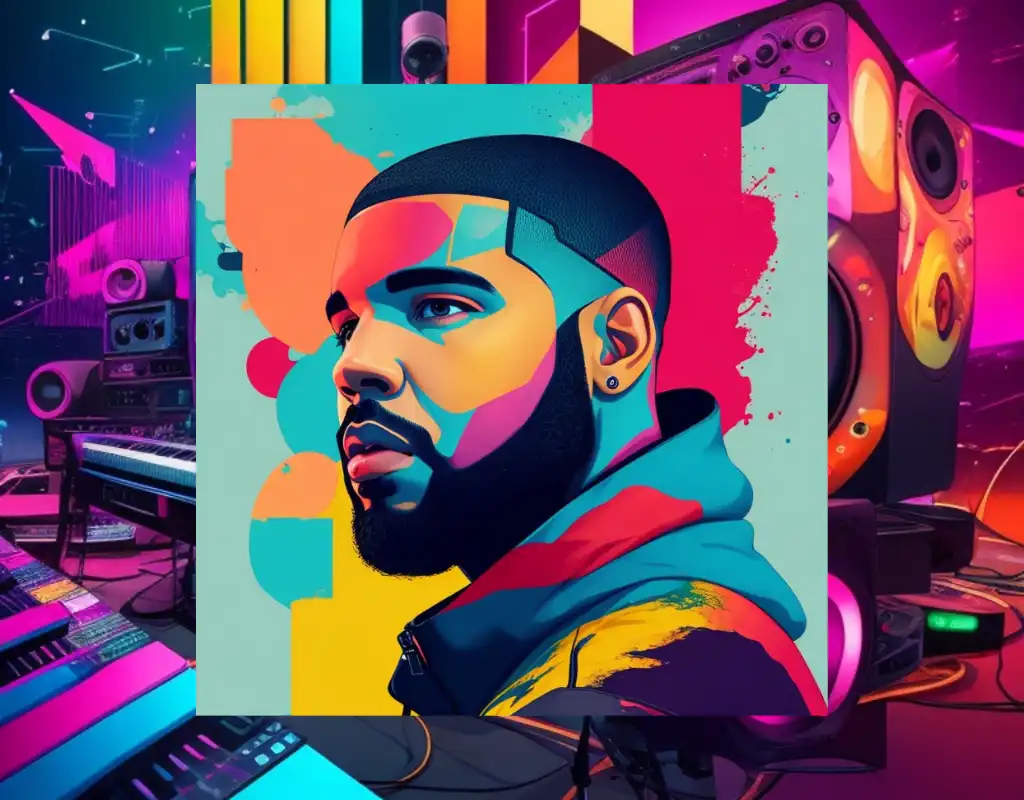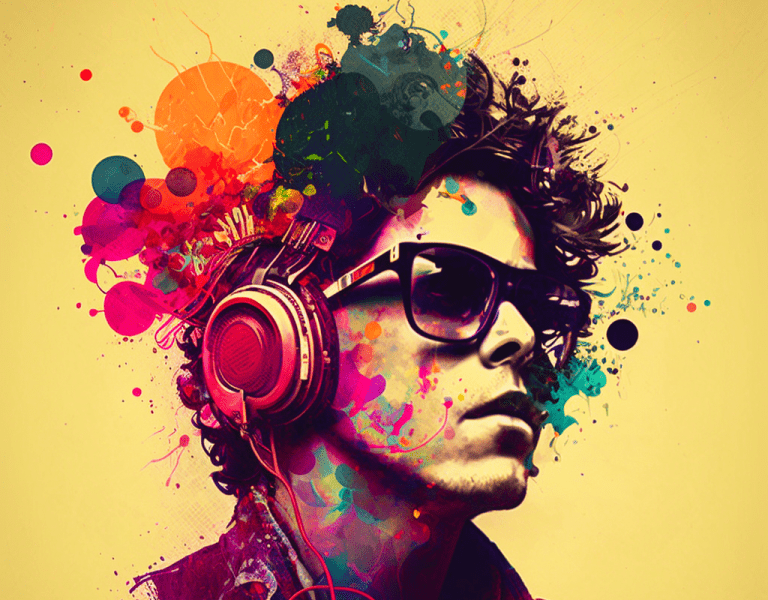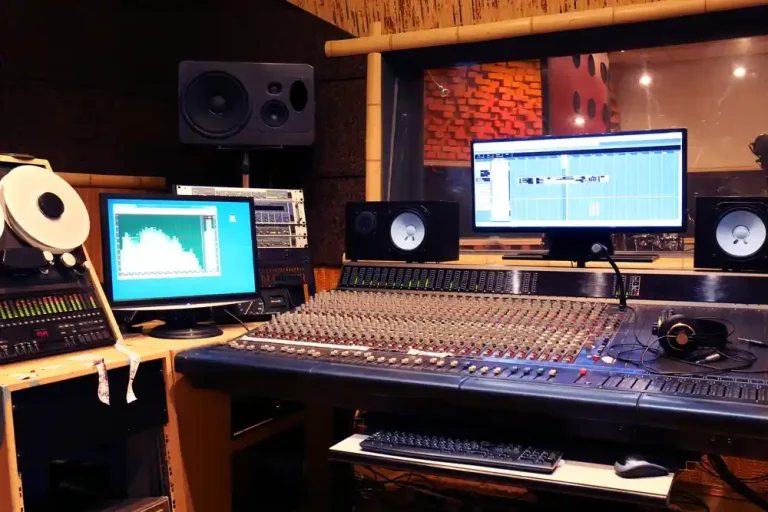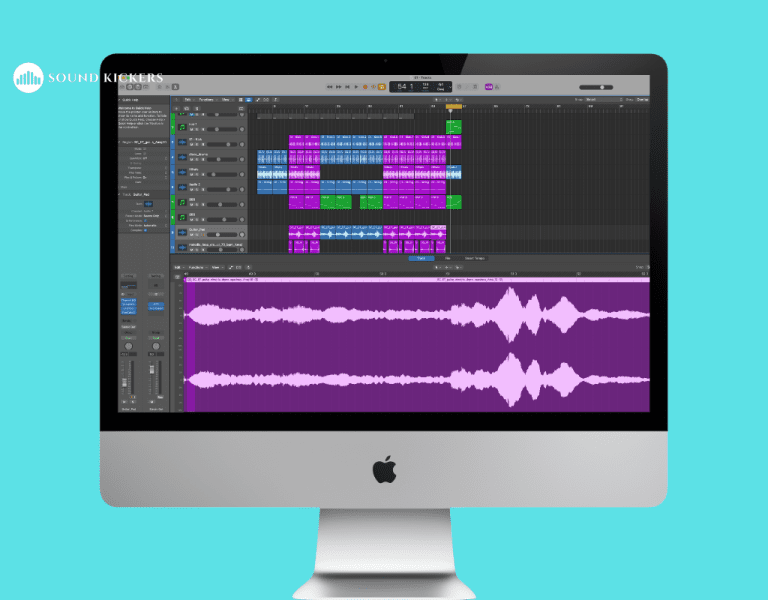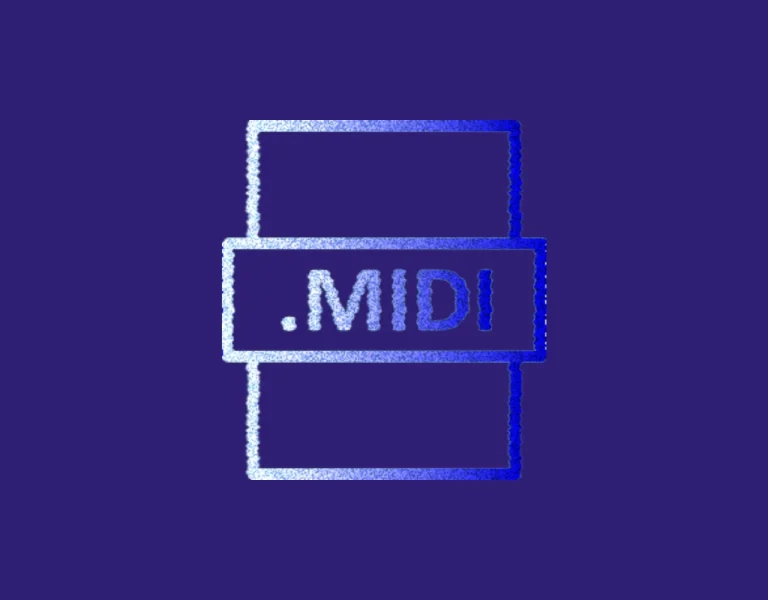Heart On My Sleeve: How the Viral AI Drake Song Was Made
In today’s article, we’ll dive into making the viral Drake AI song “Heart on My Sleeve.”
We’ll explore the different aspects of the song, such as the instrumental, vocals, and challenges it presents within the music industry.
We’ll also touch on the legal and ethical concerns regarding the use of AI to mimic famous artists’ voices.
Now, let’s jump into the deconstruction of the song and how it was produced.
Key Takeaways
- Learn the process behind the viral Drake AI song “Hard on My Sleeve.”
- Understand legal and ethical concerns with AI-generated vocals.
- Discover how the instrumental and vocals were created for this unique project.
Table of Contents
Drake’s AI song “Hard on My Sleeve” was produced by ghostwriter977, and we will show you exactly how the vocals and instruments were made.
This song marks a new era in the music industry as it is the first viral song to use AI to convert the timbre of someone’s voice into the likes of Drake or any other artist.
The beat in this song was not created by AI but by a human.
The vocals were also likely written and sung by a human, with a demo vocal recorded before the vocals were run through an AI voice generator.
AI’s role in this track is converting Ghost Rider 977’s timbre into Drake’s voice.
This song went viral because the piano sounded robotic, leading many listeners to assume that AI wrote the entire track, including the beat and vocals.
However, this is not the case.
Deconstruction of Heart On My Sleeve
In this section, we’ll delve into the details of how the viral Drake AI song “Hard On My Sleeve” came to be.
We’ll discuss the making of the instrumental as well as the vocals.
Let’s start with the piano.
Piano
The piano plays a significant role in the track’s overall sound and is essential to its success.
To achieve the robotic piano sound, the exact preset used can be found in Addictive Keys, as a heavily modified version of the “Intense Keys” preset.
This preset uses different microphones like the closed rib microphone and the amp tube microphone.
The melody played on the piano is essential to its overall impact.
You will notice that brief notes are played on the lower octaves, adding subtle yet beautiful complexity to the harmonic depth. Without this, the piano wouldn’t have sounded as rich and wouldn’t have gone as viral as the original song did.
Additional effects such as a multi-band compressor (OTT), compression, air distortion, chorus, and reverb are used to enhance the piano sound.
When used correctly, these effects give the piano a wide stereo sound while keeping it in mono at specific sections of the song.
During the song, different pianos are brought in at certain points.
For instance, a second piano comes in when The Weeknd is introduced.
A bass piano also appears at two key points in the track.
By understanding and applying these techniques, you can achieve a similar piano sound in your own music production projects.
Remember that attention to detail, correct effects, and melody complexity contribute to making a unique and captivating piano sound.
Drums
Let’s focus on the drums used in the viral AI Drake song, based on Aiden Kenway’s great in-depth analysis from the video above. Go check that out if you haven’t already.
Only two different drum samples are used in this track:
- The Identical hi-hat
- The Identical snare.
The hit one hi-hat sample is used for the hi-hat, which is very common in trap music.
To achieve the desired sound, you should go to the envelope/instrument settings and create an envelope with the sustain at 100 and everything else down to zero. This will ensure that the hi-hat only plays for as long as it is played in the MIDI.
For example, the hi-hat will also play longer if you make the notes longer. This approach will give you the same sound as in the original song.
Next up is the identical snare. To match the sound, you must play the snare up at F, not down at C.
808
In making this viral Drake AI song, one key element that stood out was the use of the 808.
You’ll notice that the exact 808 used in this beat probably was the Spinz 808.
To recreate this sound, you’ll need to manipulate the envelope settings by setting the sustain to 100% and putting everything else down to zero.
To achieve the right sound, boost the 808 and ensure the clip is turned on at the volume level.
According to Aiden: Adding a clipper to the sample is vital, not just on the master channel.
Be sure to have the 808 sound already clipped before it’s routed to the master. This approach helps to prevent other instruments from being blown out of the mix.
For example, the sound may be slightly different when the clip is turned off, but turning it on can preserve the necessary characteristics and qualities.
With this approach, your beat will have the right 808 sound that was crucial in making the original song so successful.
Vocal Production Process
In the vocal production process, starting with good-quality raw vocals is crucial.
Singing in the style of Drake, focus on projecting his unique tone and subtle nuances; this will be the basis for transforming your voice into his likeness using an AI generator.
Once you have recorded the vocals, upload them to an AI generator to convert the timbre of your voice into that of Drake.
It’s important to note that using AI technology to mimic an artist’s voice may have legal and ethical consequences, so proceed with caution. (Read more about this in the next section).
After processing the vocals with the AI generator, you’ll need to enhance the sound further to achieve a polished final product.
Begin with a de-esser, such as Ozone Pro Dynamic EQ, to eliminate any harsh sibilance from the recording. Adjust the EQ settings as needed, targeting frequencies around 4,000 Hertz.
Next, add compression and auto-tune to lock in the key and emulate Drake’s signature vocal style. This process makes the voice sound more robotic but closely aligns with the original artist’s sound.
Finally, apply a light reverb, such as Valhalla Room, to give the final vocal recording a touch of depth and ambiance.
By meticulously following these steps, you can achieve impressive results in replicating the vocal production style of popular artists like Drake.
However, always be aware of the potential legal and ethical implications of using generative AI technology to mimic copyrighted material, and only proceed if you fully understand the risks involved.
Legal and Ethical Concerns of AI Vocals
Citing legal and ethical concerns regarding the use of AI-generated vocals is crucial:
Legal Concerns:
- The use of copyrighted material without the original copyright owner’s permission poses a significant legal issue.
- It’s important to note that when using generative AI to mimic an artist’s voice, the AI is often trained on previous songs in which the artist’s voice was copyrighted.
- This becomes an even more pressing issue when money is involved. If the AI-generated song is making money for someone other than the original artist, it infringes on the legal rights of that artist.
Ethical Concerns:
- Generative AI has the potential to make an artist say things that they would never have approved of, potentially damaging their public image.
- AI-generated vocals might misinterpret an artist entirely and inflict negative consequences on their reputation.
- An artist who has undergone controversies can have those instances magnified using AI-generated lyrics, thereby impacting their credibility and public perception.
In light of these concerns, when exploring the world of AI-generated vocals, bear in mind the following guidelines:
- Refrain from using copyrighted material without permission.
- Avoid making false or misleading claims with an artist’s voice.
- Use your newfound knowledge responsibly and ethically by staying aware of these concerns.
Final Thoughts
The viral Drake AI song, “Hard on My Sleeve,” signals AI’s potential impact on music production.
Yet, the beat and lyrics were human-made; AI merely adjusted the voice timbre.
The song’s unique robotic piano sound likely contributed to its viral popularity. Discussing AI in music, however, raises legal and ethical concerns.
Copyright infringement, especially involving financial gains, can lead to significant legal troubles.
Furthermore, generative AI can manipulate artists’ words, potentially harming their public image.
Recreating AI vocals requires specific techniques and permissions, as misuse can invite legal issues.
This Drake AI song exemplifies a future blending human creativity with AI, underscoring the need to understand technology’s progress’s ethical dimensions.

